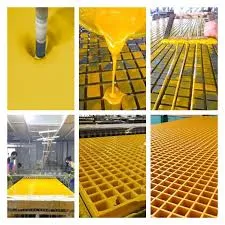
-
 Afrikaans
Afrikaans -
 Albanian
Albanian -
 Amharic
Amharic -
 Arabic
Arabic -
 Armenian
Armenian -
 Azerbaijani
Azerbaijani -
 Basque
Basque -
 Belarusian
Belarusian -
 Bengali
Bengali -
 Bosnian
Bosnian -
 Bulgarian
Bulgarian -
 Catalan
Catalan -
 Cebuano
Cebuano -
 China
China -
 China (Taiwan)
China (Taiwan) -
 Corsican
Corsican -
 Croatian
Croatian -
 Czech
Czech -
 Danish
Danish -
 Dutch
Dutch -
 English
English -
 Esperanto
Esperanto -
 Estonian
Estonian -
 Finnish
Finnish -
 French
French -
 Frisian
Frisian -
 Galician
Galician -
 Georgian
Georgian -
 German
German -
 Greek
Greek -
 Gujarati
Gujarati -
 Haitian Creole
Haitian Creole -
 hausa
hausa -
 hawaiian
hawaiian -
 Hebrew
Hebrew -
 Hindi
Hindi -
 Miao
Miao -
 Hungarian
Hungarian -
 Icelandic
Icelandic -
 igbo
igbo -
 Indonesian
Indonesian -
 irish
irish -
 Italian
Italian -
 Japanese
Japanese -
 Javanese
Javanese -
 Kannada
Kannada -
 kazakh
kazakh -
 Khmer
Khmer -
 Rwandese
Rwandese -
 Korean
Korean -
 Kurdish
Kurdish -
 Kyrgyz
Kyrgyz -
 Lao
Lao -
 Latin
Latin -
 Latvian
Latvian -
 Lithuanian
Lithuanian -
 Luxembourgish
Luxembourgish -
 Macedonian
Macedonian -
 Malgashi
Malgashi -
 Malay
Malay -
 Malayalam
Malayalam -
 Maltese
Maltese -
 Maori
Maori -
 Marathi
Marathi -
 Mongolian
Mongolian -
 Myanmar
Myanmar -
 Nepali
Nepali -
 Norwegian
Norwegian -
 Norwegian
Norwegian -
 Occitan
Occitan -
 Pashto
Pashto -
 Persian
Persian -
 Polish
Polish -
 Portuguese
Portuguese -
 Punjabi
Punjabi -
 Romanian
Romanian -
 Russian
Russian -
 Samoan
Samoan -
 Scottish Gaelic
Scottish Gaelic -
 Serbian
Serbian -
 Sesotho
Sesotho -
 Shona
Shona -
 Sindhi
Sindhi -
 Sinhala
Sinhala -
 Slovak
Slovak -
 Slovenian
Slovenian -
 Somali
Somali -
 Spanish
Spanish -
 Sundanese
Sundanese -
 Swahili
Swahili -
 Swedish
Swedish -
 Tagalog
Tagalog -
 Tajik
Tajik -
 Tamil
Tamil -
 Tatar
Tatar -
 Telugu
Telugu -
 Thai
Thai -
 Turkish
Turkish -
 Turkmen
Turkmen -
 Ukrainian
Ukrainian -
 Urdu
Urdu -
 Uighur
Uighur -
 Uzbek
Uzbek -
 Vietnamese
Vietnamese -
 Welsh
Welsh -
 Bantu
Bantu -
 Yiddish
Yiddish -
 Yoruba
Yoruba -
 Zulu
Zulu
Jan . 09, 2025 11:46
Back to list
Fans & Dampers & Demisters
FRP (Fiberglass Reinforced Plastic) tanks are revolutionizing the way industries store and manage their critical liquids and chemicals. As a premium solution for a variety of applications, these tanks come equipped with unparalleled benefits that cater to the needs of sectors ranging from agriculture to petrochemicals.
End-users have vocalized confidence in the overall performance of FRP tanks. Their adaptability to extreme temperatures without compromising structural integrity is one of the highlights that distinguish them from metal counterparts. This resilience adds a layer of reliability that is paramount in industries where stable storage conditions are pivotal. From a professional perspective, the expertise involved in the manufacture and deployment of FRP tanks speaks to a deep understanding of material sciences and engineering. Having garnered insights through years of industry application, manufacturers have optimized production techniques to yield impeccable quality control. Innovative reinforcements and material compositions continually push the boundaries of what FRP tanks can achieve, signaling a future of even greater innovation and application possibilities. Authoritative industry bodies endorse the use of FRP tanks, furnishing these solutions with standards that ensure they meet rigorous safety and operational benchmarks. Trust in FRP tanks is further cemented by the meticulous testing they undergo before deployment, reassuring stakeholders of their reliable performance. In conclusion, FRP tanks represent a synthesis of technological advancement and practical application, setting a new standard in storage solutions. Their manifold advantages not only underscore their necessity in today’s industrial landscape but also pave the way for future adoption across a wider spectrum of applications. For enterprises in pursuit of optimization and sustainability, FRP tanks exemplify a strategic asset that merges cutting-edge technology with environmental stewardship.


End-users have vocalized confidence in the overall performance of FRP tanks. Their adaptability to extreme temperatures without compromising structural integrity is one of the highlights that distinguish them from metal counterparts. This resilience adds a layer of reliability that is paramount in industries where stable storage conditions are pivotal. From a professional perspective, the expertise involved in the manufacture and deployment of FRP tanks speaks to a deep understanding of material sciences and engineering. Having garnered insights through years of industry application, manufacturers have optimized production techniques to yield impeccable quality control. Innovative reinforcements and material compositions continually push the boundaries of what FRP tanks can achieve, signaling a future of even greater innovation and application possibilities. Authoritative industry bodies endorse the use of FRP tanks, furnishing these solutions with standards that ensure they meet rigorous safety and operational benchmarks. Trust in FRP tanks is further cemented by the meticulous testing they undergo before deployment, reassuring stakeholders of their reliable performance. In conclusion, FRP tanks represent a synthesis of technological advancement and practical application, setting a new standard in storage solutions. Their manifold advantages not only underscore their necessity in today’s industrial landscape but also pave the way for future adoption across a wider spectrum of applications. For enterprises in pursuit of optimization and sustainability, FRP tanks exemplify a strategic asset that merges cutting-edge technology with environmental stewardship.
Next:
Related Products
Latest news
-
High-Quality Fiberglass Car Bodies Durable GRP Car & Boat Body SolutionsNewsJul.08,2025
-
High-Quality Fiberglass Dual Lamination Product Manufacturer Durable FRP & GRP Dual Lamination SolutionsNewsJul.08,2025
-
Rectangular Tank with Dimensions for GRP Calculation Custom Fiberglass GRP Rectangular TanksNewsJul.07,2025
-
High-Quality Fiberglass Weir Custom FRP Weir & Fiberglass Tanks ManufacturerNewsJul.07,2025
-
CPVC FRP Pipe A Reliable Choice for Industrial Applications High Strength & Corrosion ResistanceNewsJul.07,2025
-
Fiberglass Scrubber for Effective Cleaning and Stain Removal – Superior Performance in Various ApplicationsNewsJul.06,2025









